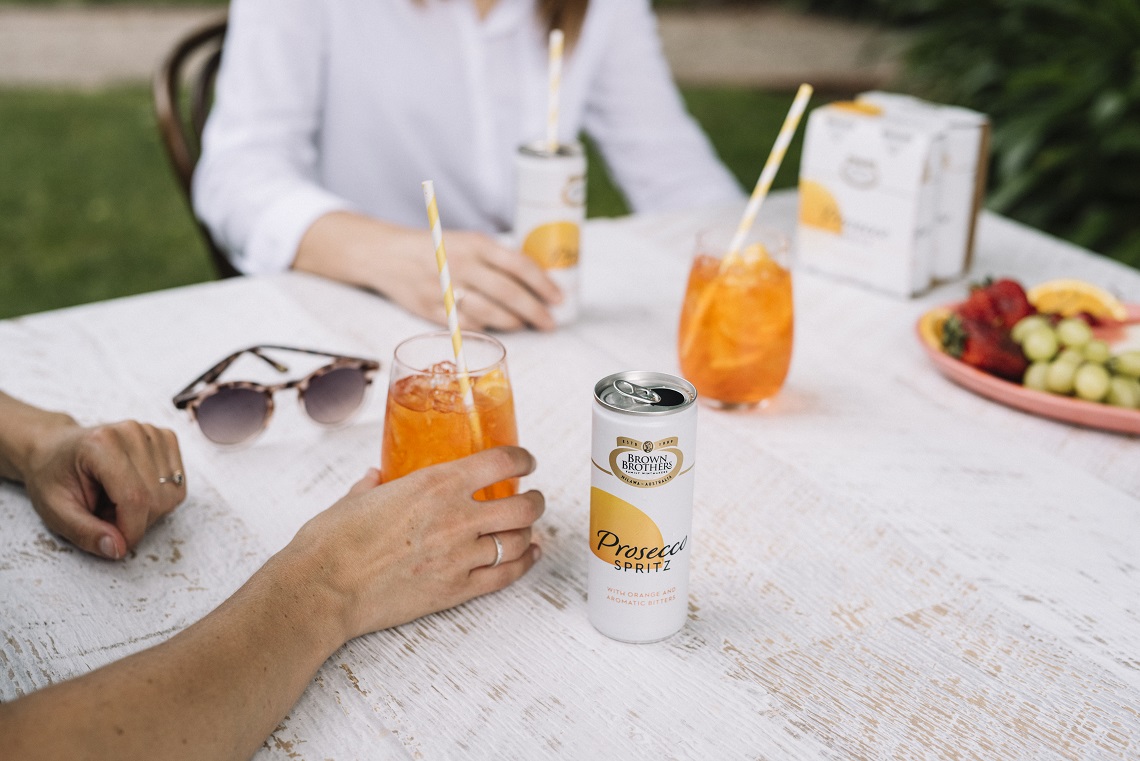By Ava Green
The can serve has always been contentious in Australian culture, but the format is shaking off its less-than-premium reputation, with the somewhat unlikely rise of canned wine. In the September issue of National Liquor News, Ava Green explores the rise of the category and what it means for retailers.
While Australians may have been the inventors of the wine in a can serve all the way back in 1996, which resulted in the patent of the Vinsafe tech that launched the concept globally in 2002, Australian drinkers have been surprisingly lax in their uptake of the trend. However, it seems that Australian wine fans are finally catching up with their UK and US counterparts and embracing this new serve, with the category now worth $8.5 million in Australia according to IRI figures. So, what is it about wine in a can that is such a compelling offering for Australian drinkers?
THE EXPANDING TREND
According to Daniel Bone, Insights Director at IRI, in the 12 months to May this year, canned wine has been a bright spot in a waning wine category, which has seen softer sales annual growth recorded due to weakness in key segments like Champagne and Sauvignon Blanc.
“Canned wine generated nearly $11 million in additional annual sales, with over 70 per cent of this value attributable to sparkling canned wine,” he says.
At Brown Family Wine Group, Marketing Manager, Emma Brown says that the decision to explore canned wine came about because the company is committed to creating and sharing adventures in wine, and their canned Prosecco Spritz ticks all the boxes.
“As part of our commitment we need to ensure that we are delivering products to the consumer and customer that align to changing needs and occasions,” she says. “Cans are a result of this commitment.”
With more than 10 years of experience in various marketing roles in multi-national FMCG and the wine industry both in Australia and abroad, Brown is quick to point out the practicalities of the canned wine serve to market.
“[We] also [know] that there are changing household structures in Australia with one in four households now single person, leading to more individual consumption occasions in the home, and less storage space for a traditional bottle of wine with smaller pantries and fridges,” she explains.
Ben Culligan, Marketing Director ANZ at Treasury Wine Estates (TWE), believes that wine in cans has been an exciting entry into the Australian market. TWE has been one of the companies to embrace the burgeoning trend, producing the top four wine in cans sold in the country – including the Squealing Pig and the T’Gallant ranges. And he is keen to spread the benefits for retailers of the convenience serve, with the smaller serves removing potential barriers to purchase that the traditional 750ml wine bottle can present.
“We had seen wine in cans take off in the USA and knew there would be similar opportunities in Australia,” Culligan continues.
While premiumisation is always a buzz word in the liquor industry, the convenience factor cannot be discounted, says Daniel Bone, Insights Director at IRI,
“It is convenience first and foremost,” he asserts. “Canned wines are portable, durable, and chill faster – all of which are compelling usage benefits that support the growth of relaxed/casual and outdoor drinking occasions in Australia.”
Brown agrees, saying: “Convenience is king. People are looking for items that fit in into their busy lives. Cans present a way for people to enjoy the wines they love with the utmost convenience.”
THE MILLENNIAL FACTOR
While there is often still a certain amount of eye rolling at the term ‘millennial’, the fact is, the youngest millennials are hitting their mid-twenties, while the oldest are nearing 40.
According to Culligan, canned wine is introducing wine to younger adult shoppers, 22 per cent of whom are new to the wine category, as well as opening the field to situations where glass, or an entire bottle, just aren’t what consumers are after.
“[It is] new occasions – picnics, festivals, race meets, airlines, people who don’t want to drink a whole bottle or who would like to try different varietals in the one session,” he says. “With new consumers now enjoying wine in occasions not typically associated with wine, it is leading to a greater exploration of the wine category as a whole.”
Brown points out that this landscape of new drinking occasions is being created by a new generation of drinkers that don’t necessarily play by the rules of previous generations. And that means lower ABV serves are at the forefront of their minds.
“Young people are more likely than other generations to be conscious of their alcohol consumption and look to options to moderate and stay in control,” she says. “Smaller formats, such as cans allow people to stay mindful of their consumption when it comes to wine.”
But that doesn’t have to make them dull – the Brown Brothers Prosecco Spritz is a convenient way to not only enjoy the spritz trend that Australians are still embracing with gusto, but also allows them to accurately track their alcohol intake.
SUMMER RETAILING
According to Bone, the rise in ‘repertoire drinking’ means that producers, and in turn retailers, can use cans as a way of making wine more approachable for consumers who may otherwise gravitate towards beer, cider or RTDs.
“It helps get wine into the ‘consideration set’ across a wider range of consumption moments,” he says. “You only have to look at the longer-term success of Canadian Club’s marketing communications to think beyond beer to realise there is an opportunity to shake up routines.”
Brown asserts that ensuring cans are both visible and chilled is key to both immediate and long-term success in retail.

